How Octavia Butler found joy in the mundane daily experience of being outdoors
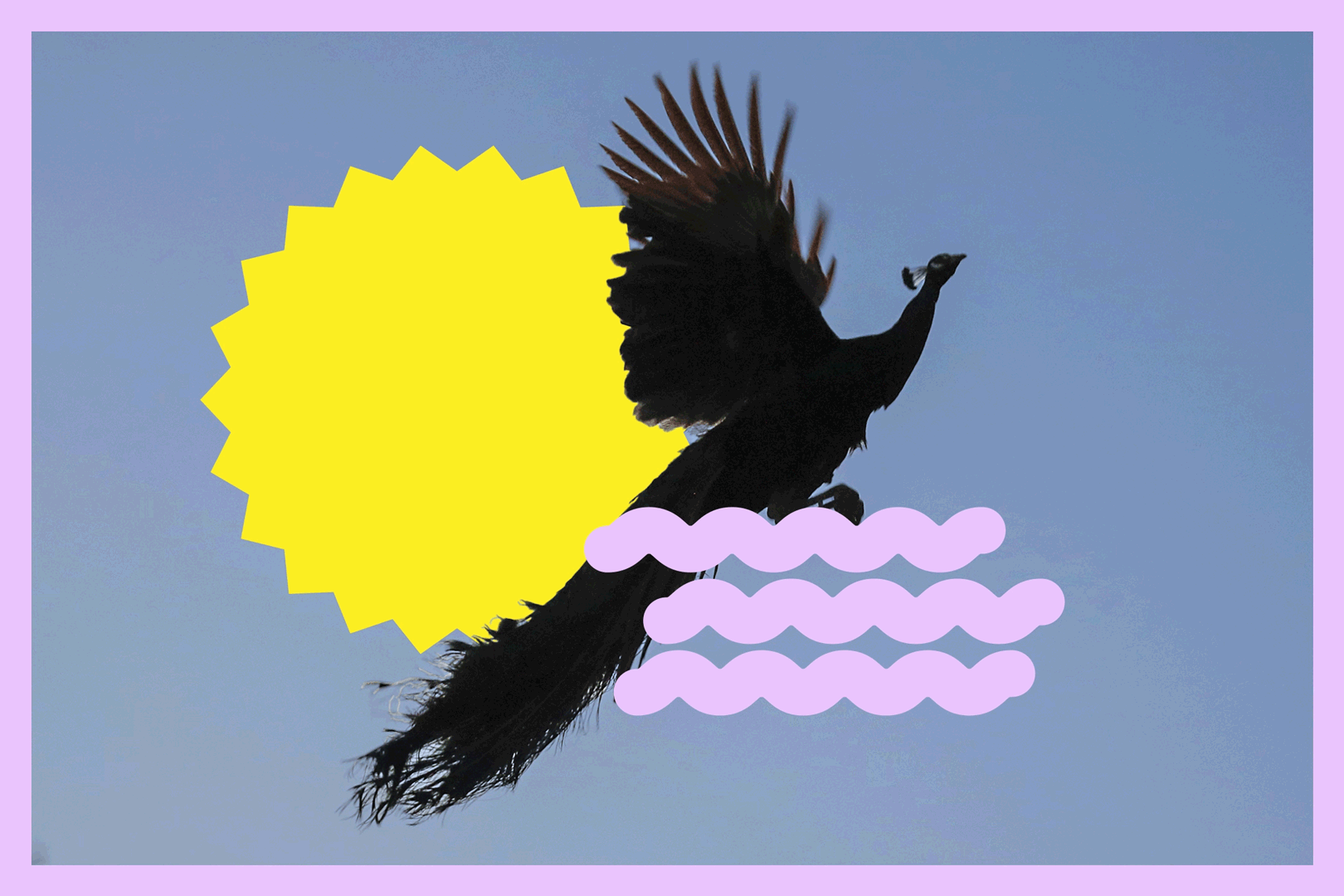
- Share via
Celebrated science fiction author and Pasadena native Octavia E. Butler (1947-2006) tussled with the same environmental and social concerns as contemporary Angelenos. We know, because the self-described news junkie kept carefully organized files of L.A. Times clippings across a variety of categories: climate catastrophes, housing displacement and gentrification, racial bias, homelessness, crime, education and reproductive issues like the barring of midwives from hospitals. In 2023, Butler’s concerns from the 1980s and ‘90s feel relevant, from raging wildfires to homelessness and the mental health crisis.
Like many of us, walking and observing was how Butler made sense of her world. Butler, whose mother worked as a cleaner in Pasadena homes, did not travel by car. Instead, she rode the bus or walked along the streets near her Pasadena home and to the schools she attended: Washington Junior High School, John Muir High School and Pasadena City College.
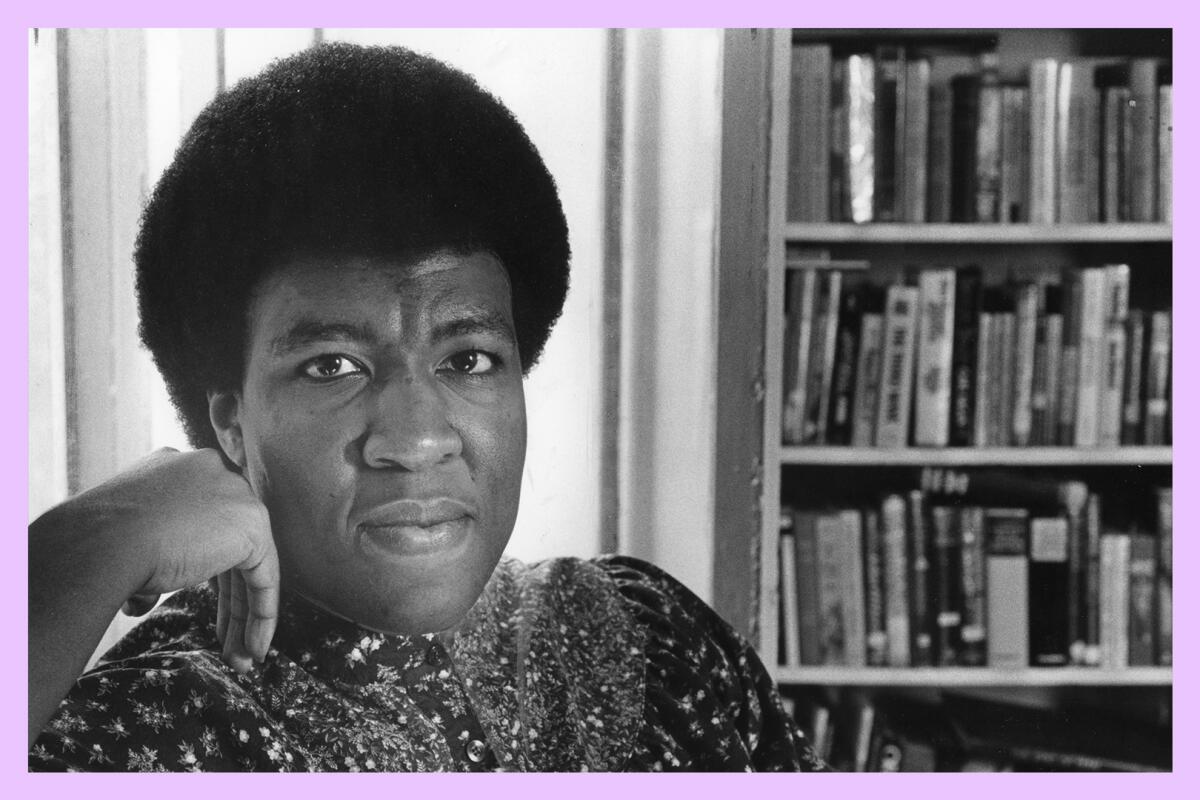
On her walks and bus rides, Butler took careful note of the cornucopia of L.A. flora and fauna, such as this note from Sept. 19, 1992: “Magnolia trees / Mention grains / More expensive acorn / Trees here and outside / Magnolia trees are dropping / Their elongated lollypop seed pods / Camphor tree / round smooth berries and berry branches–tiny / Are still green.”
These observations of urban nature, combined with Butler’s dedication to the news and her desire to write an alternate universe into being, may have brought about her most famous novel, “Parable of the Sower.”
In “A Handful of Earth, a Handful of Sky,” a 2020 book dedicated to tracing Butler’s thought (and in which that above note appears), L.A.-based journalist and essayist Lynell George quotes Butler: “I need to read or to hear the news everyday so that I have at least the illusion of knowing what’s going on, what people are doing, where we seem to be heading. I wrote ‘Parable’ at least partly because I’m a news junkie. I might not have written this novel if I weren’t a news junkie — as a way to fix the world.”
In the years since the 2017 exhibition on her work at the Huntington Library, Art Museum, and Botanical Gardens, Butler’s star has streaked across Los Angeles and greater pop culture, something of a Butler renaissance, if you will. Major articles, like the one Vulture published just last year, trumpet her life and her work, though her last novel, “Fledgling,” was published in 2005, a year before she died. In the darkest truth of science fiction, her current popularity may be because her musings are coming true.
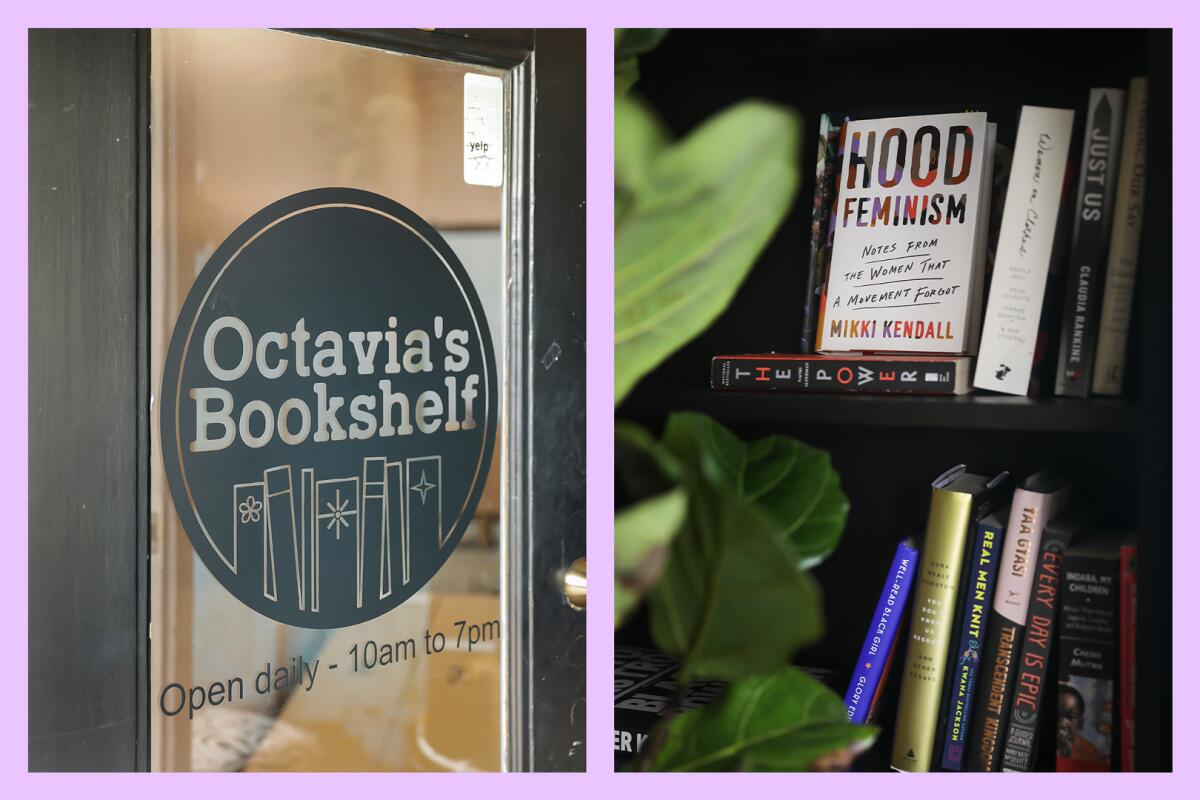
A new FX television series based on Butler’s novel “Kindred,” which is set in Altadena, debuted in 2022 and is available on Hulu. The same year, the junior high school Butler attended in Pasadena was renamed the Octavia E. Butler Magnet school in her honor. And perhaps most exciting for locals, a small bookstore — the first independent bookstore in Pasadena highlighting authors of color — called Octavia’s Bookshelf, opened in February on Hill Avenue just north of Washington Boulevard, not far from where she grew up.
A couple weeks ago, I visited the Octavia Butler archives at the Huntington and found that her fascination wasn’t limited to L.A.-area issues but included more general Californian topics as well. Butler clipped one Oct. 30, 1983, Times article entitled, “Pacific Crest Trail — A 2,606-Mile Odyssey Through Wilderness” by Allan Parachini. The article described the grueling trial that hikers encounter, as well as the beauty.
This article, as well as ones Butler had clipped out of The Times about crime and struggles around MacArthur Park and downtown, may have provided inspiration for her 1993 book “Parable of the Sower,” a post-apocalyptic fiction work following a young Black woman, Lauren, forced to journey away from her home in a shattered Los Angeles. The book draws parallels to contemporary society, with a pendulum swing back toward incivility, including misogyny, sexual harassment and racism in the form of harassment of those in interracial relationships.
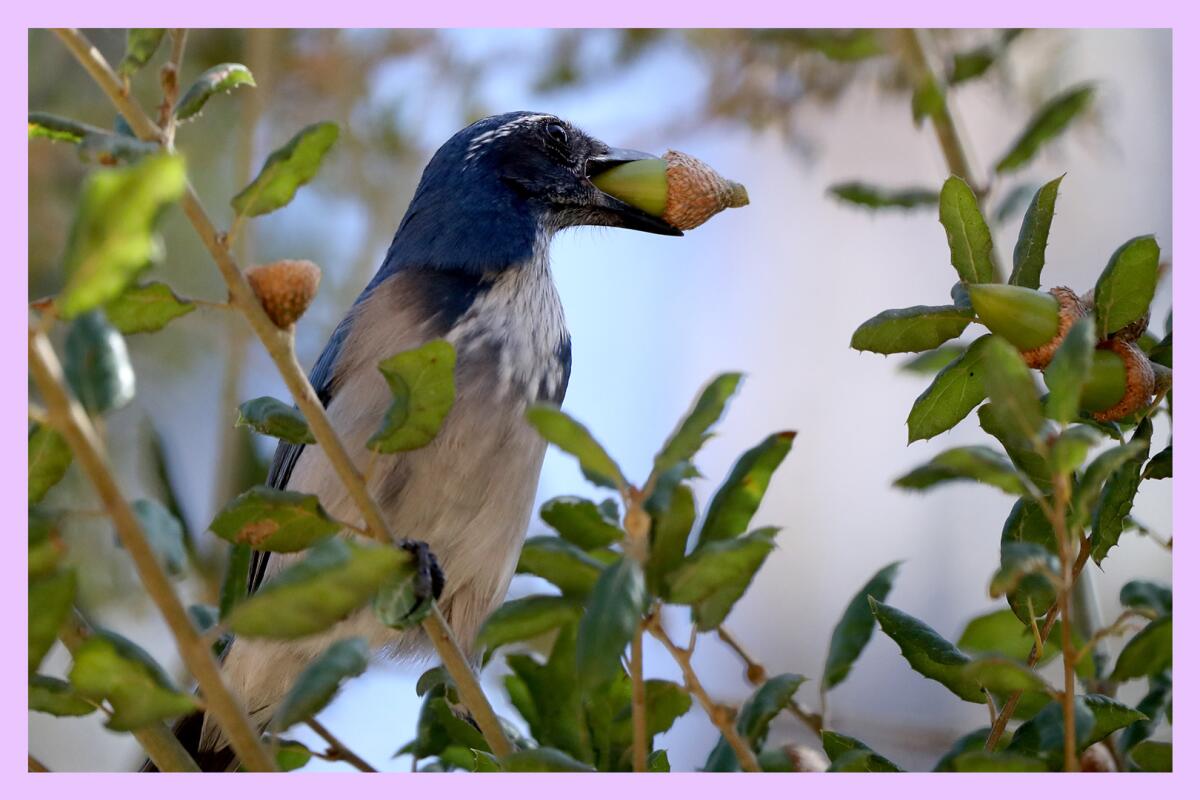
When a librarian put the book in my teenage hands, it had been published just a year earlier. Adrift as a teenager in Illinois, I found solace in Lauren’s story of survival, particularly against the harsh conditions of the city. One motif of survival in the book was the acorn, which mystified me until I moved to L.A. Tribes in Illinois also made use of the oak trees and acorns there, but the large number of coast live oaks in Los Angeles offered vital shade and a consistent source of seasonal sustenance for the Tongva. Moving to Los Angeles opened up a connection to nature for me that was exciting, with its year-round abundance and foraging delights, and my mother and I have since gathered acorns from my oak tree and local parks to make flour.
You too can walk in Butler’s steps, trace her connections with nature and explore her roots in our mysterious, wondrous and secret-laden city. I often walk the same streets Butler did, having lived near her junior high school, but recently, I decided to purposefully walk them, pondering her thoughts and her connection with urban nature. After consulting a variety of research – including the Huntington Library’s “A Guide to Octavia E. Butler’s Pasadena” and George’s notes about Butler’s walks, this is how I suggest you do it:
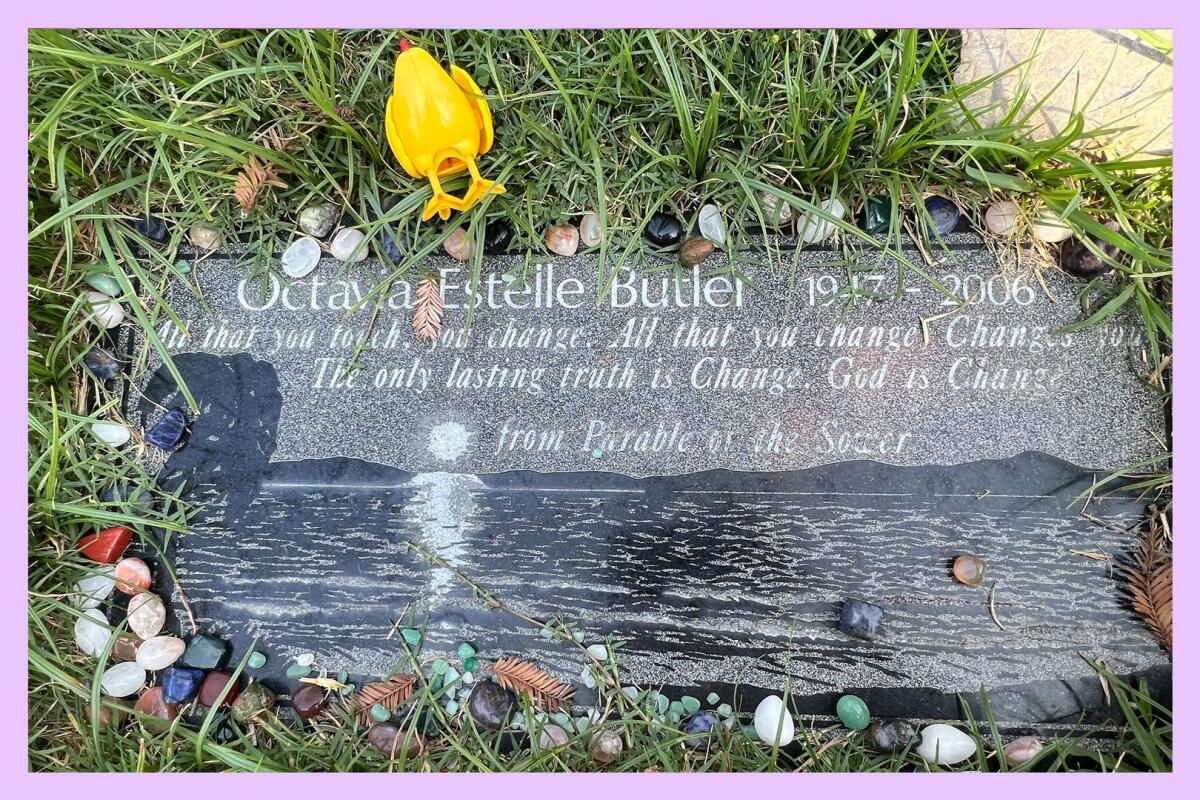
Start at Mountain View Cemetery in Altadena, where Butler’s small, unobtrusive grave is easy to miss among the showier headstones. Surrounded by cedars and junipers, her small footstone in the ground is engraved with a quote from “Parable of the Sower”: “All that you touch, you change. All that you change, changes you. The only lasting truth is Change. God is Change.”
Butler had no children or grandchildren to perform ancestor rites, but clearly, she is beloved. Visitors have left small polished stones on Butler’s footstone, and someone planted a colorful pinwheel in the earth next to it. There’s even a small chicken toy perched on her grave, perhaps a nod to her grandmother’s chicken farm in Victorville, where she was sent to live after her father’s death.
Next, drive or walk to the corner of Atchison Street and Mar Vista Avenue, imagining the lives of her Altadena-based “Kindred” protagonist, Dana. I thought of Butler’s later life in Altadena, where she moved in 1995 after buying a home near its border with Pasadena. Strolling the wide, shaded Mar Vista Avenue is a respite from busy Lake Avenue, and cedars and cypresses tower above pollinator gardens full of black sage and California poppies. Western monarchs, Horace’s duskywing butterflies, hummingbirds, bumblebees and native bees are riotous in the August sun, sipping as much nectar as they can.
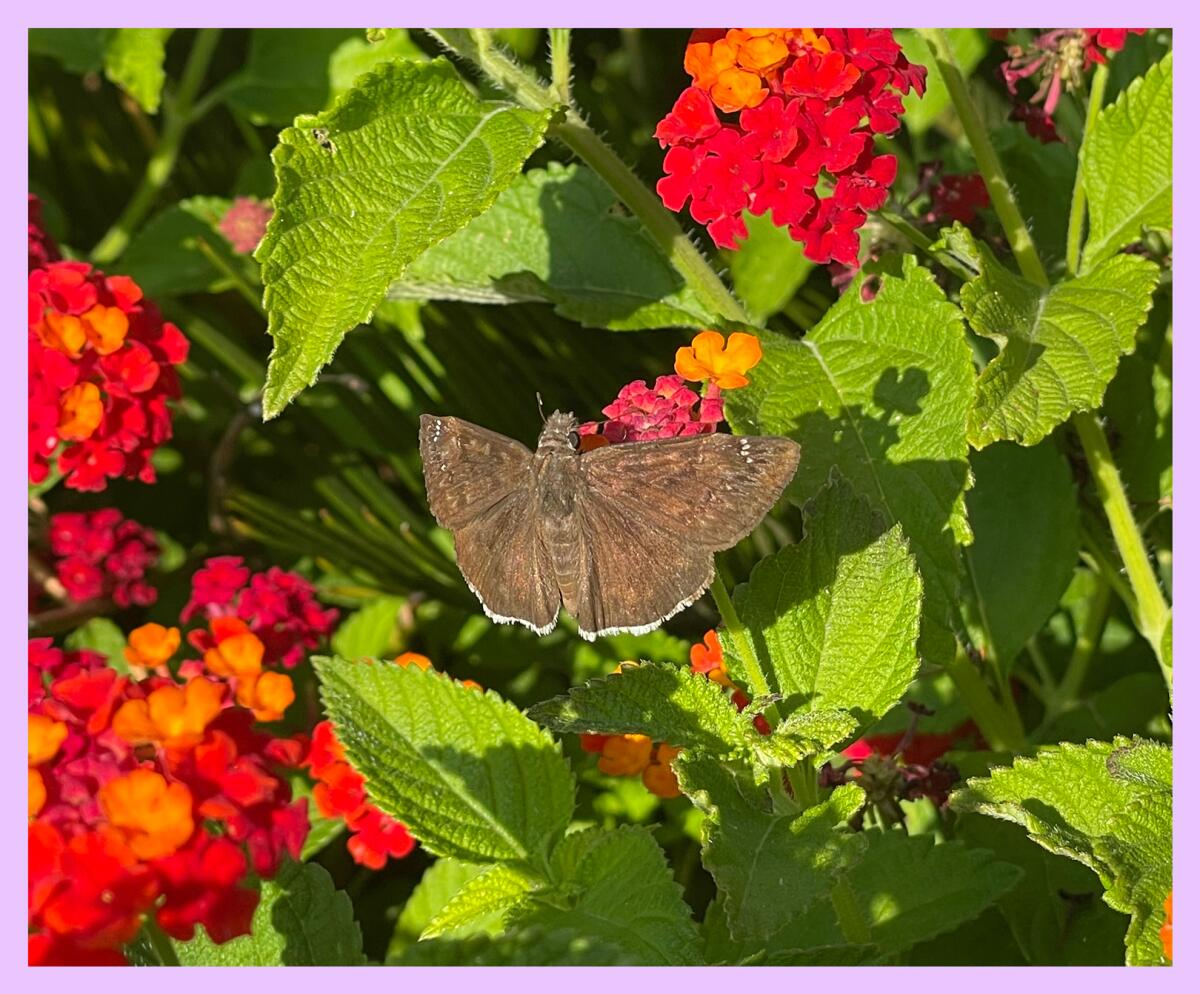
Imagine Butler getting off the bus from school. As you walk past the stately arts and crafts houses, you can almost see young Butler in front of one, dangling her legs from the porch swing, reading a book as she waits for her mother to finish work so they can go home and make dinner.
You can see her as an adult, walking home after an exhausting day of getting up to write at 2 a.m. and then heading off to work a full factory shift, but still being entranced by the persimmons and lemons hanging like jewels in Pasadena yards like she was in this journal entry from Sept. 12, 1992: “Many pomegranates are nearly ripe / Golf ball sized / Unripe green / Apples / Nearly tennis ball sized pomegranates / Smaller green lemons / Oleander blooming.”
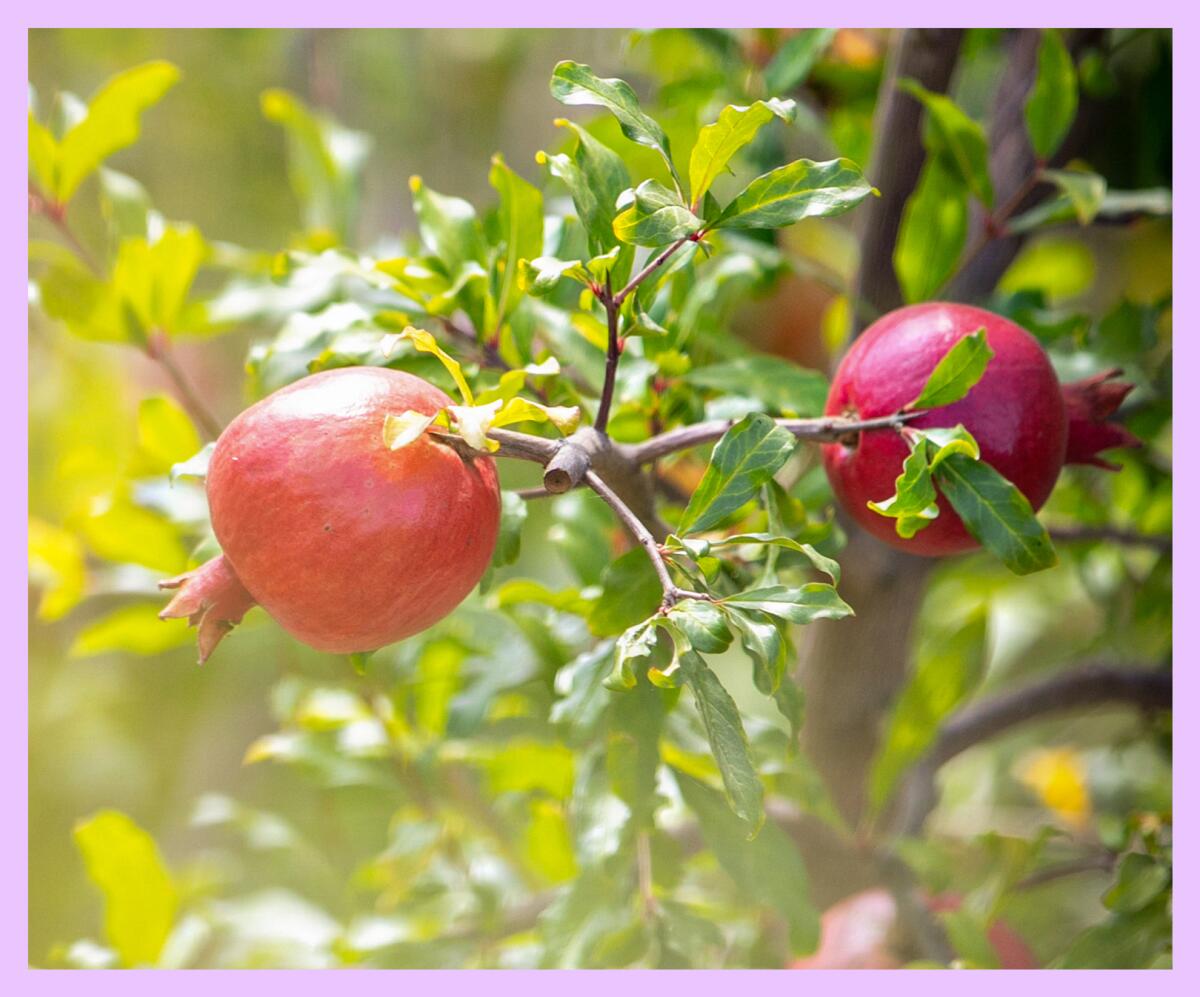
Following the Huntington guide, walk north to Mendocino Street and turn west, heading toward Lake Avenue. It’s surprisingly quiet here, the silence punctured only by laughing high school students walking to the Hot Shrimp Mami food truck. Stop to smell the sprigs of rosemary, and even pick a few for your dinner. (One sign humorously notes: “Take as much of this weed as you’d like.”).
Look up: An immature female house finch, with its quiet brown plumage, may be perched on a branch above you, dappled in late afternoon sunlight. You’ll hear a Postal Service van vroom past you. You’ll notice that the sidewalk ends.
From here, turn south onto Lake. On the gentrifying border of Pasadena and Altadena, a few Black-owned businesses still exist: vegan store and lunch spot O Happy Days Cafe, the Little Red Hen Coffee Shop and, over on Fair Oaks Boulevard, my regular lunch spot, Perry’s Joint Cafe.
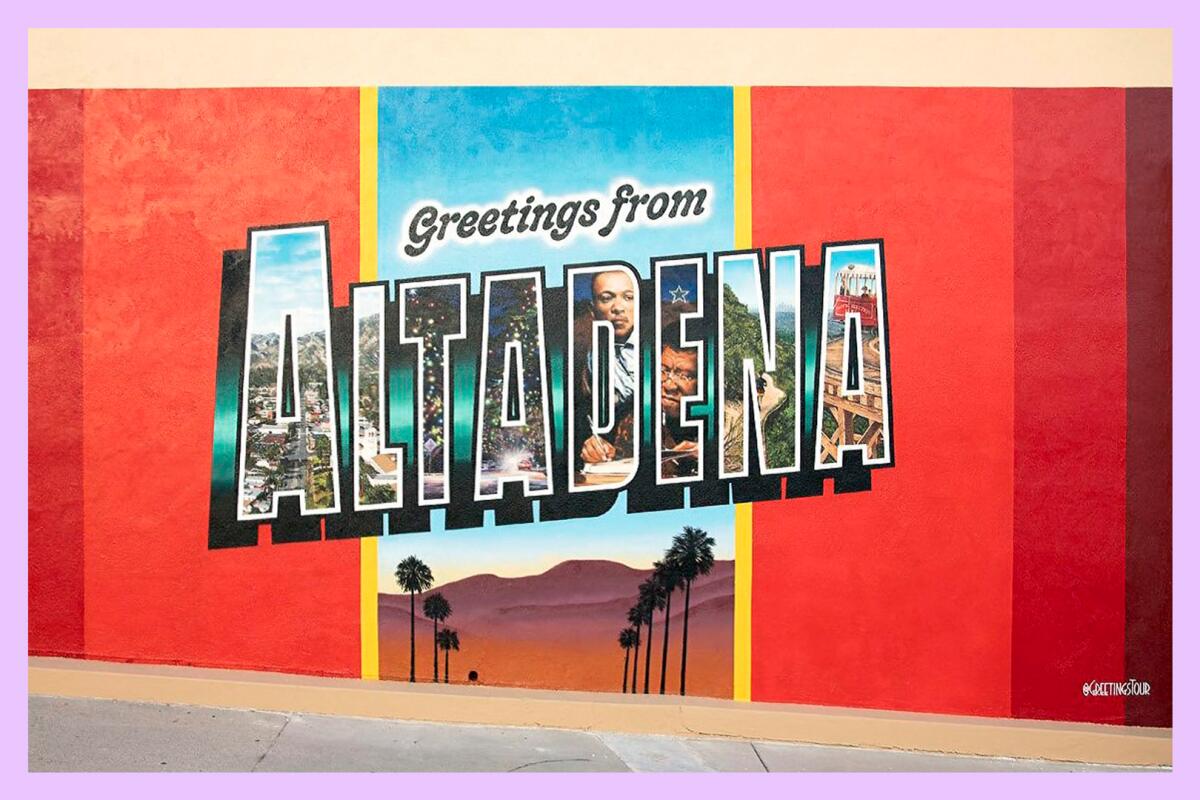
Spot Butler’s visage worked into a mural on the side of a grocery store. From here, you can head west into Butler’s own childhood neighborhood west of Lake, walking down El Molino Avenue until you reach Colorado Boulevard. Or you can go south on Lake on your way to grab one of Butler’s books at Octavia’s Bookshelf, passing a mosque, a beauty supply shop and several fast food restaurants along the way, or go even farther south to Butler’s beloved Pasadena Public Library. Or you can head north, eventually veering west toward the Altadena Library or continuing farther north to Charles S. Farnworth Park for a little loquat foraging, or a hike starting at the Cobb Estate Trailhead.
Wherever I walk in this area, it’s all Octavia’s Pasadena. In my mind’s eye, I can see her walking each of these streets, small notebook in hand. I can see her eyeing the mountains and palms, turning a curiously hairy California horse chestnut over in her palm, laughing at chittering squirrels chasing each other up a cedar. What a gift her vision of nature gave us, and how important it is for us on a warming, divided planet, to imagine another future besides the post-apocalyptic one in “Parable.”
Get The Wild newsletter.
The essential weekly guide to enjoying the outdoors in Southern California. Insider tips on the best of our beaches, trails, parks, deserts, forests and mountains.
You may occasionally receive promotional content from the Los Angeles Times.
3 things to do
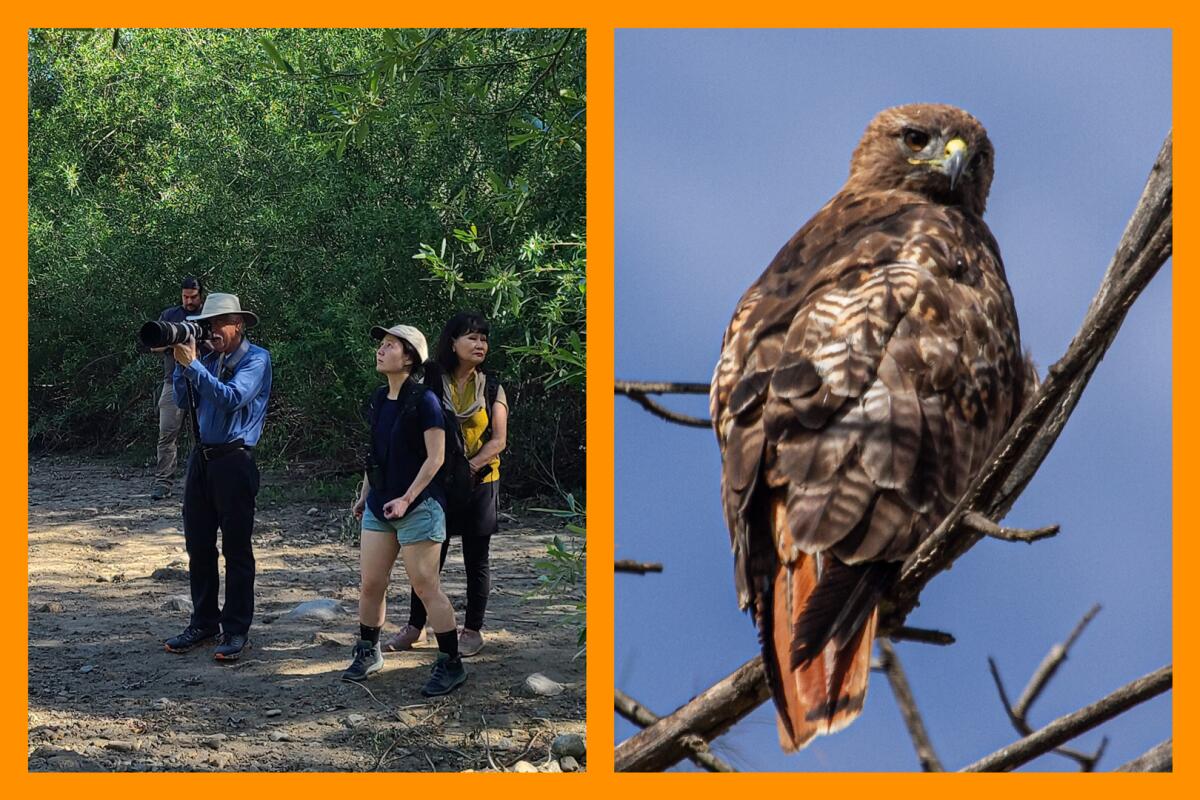
1. Be an early birder — and get the ID. Shake off sleep to join birdwatching guide Pat Bates and the San Fernando Valley Audubon Society for an early morning walk. It happens every month on the fourth Saturday from 8 to 10 a.m. (this month, it’s Aug. 26). See if you can break the record of most species seen in a day in the Valley (it’s currently 120, so get your notebook out and fire up your Merlin Bird ID app). There are 280 species represented at Hansen Dam, with its large and varied habitat. Use this map, or navigate to 10965 Dronfield Ave. in Pacoima, and meet at the ranger station. The event is free; for more info, go to sfvaudubon.org.
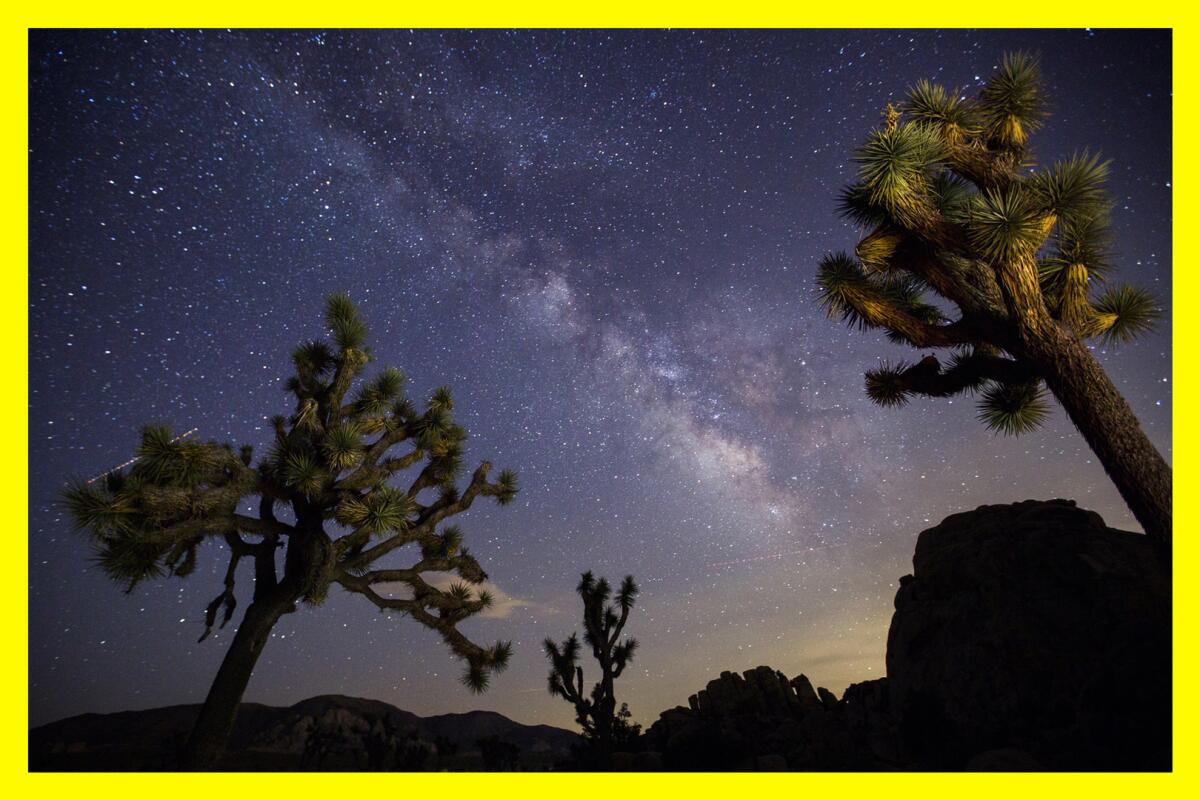
2. Stargaze in Joshua Tree darkness. If you’ve been aching to get back to the desert after the cruel heat of high summer, mark your calendars for this fall’s Joshua Tree Night Sky festival at Luckie Park in Twentynine Palms, where you’ll celebrate protecting dark night skies and get to view the solar eclipse. The Oct. 13 to 14 event features a guided tour of the Orrery, a large-scale model of the solar system you can walk around and through. Kids will love taking a close look at the sun through the solar telescope, making astronomy-themed crafts and creating their own camera-less “starry night” photos.
You’ll also see short films and learn about the importance of dark night skies to animals and stargazing. The main event is the Night Star Party, with live music, constellation tours and storytelling, plus stellar views of the desert night sky through 20-plus telescopes. Tickets vary in prices for events; the Night Star Party on Oct. 14 costs $65 for those 13 and older and $35 for ages 6 to 12, and can be purchased here. Crafts and some day events are included in the price of the Night Star pass. For more info, go to skysthelimit29.org.
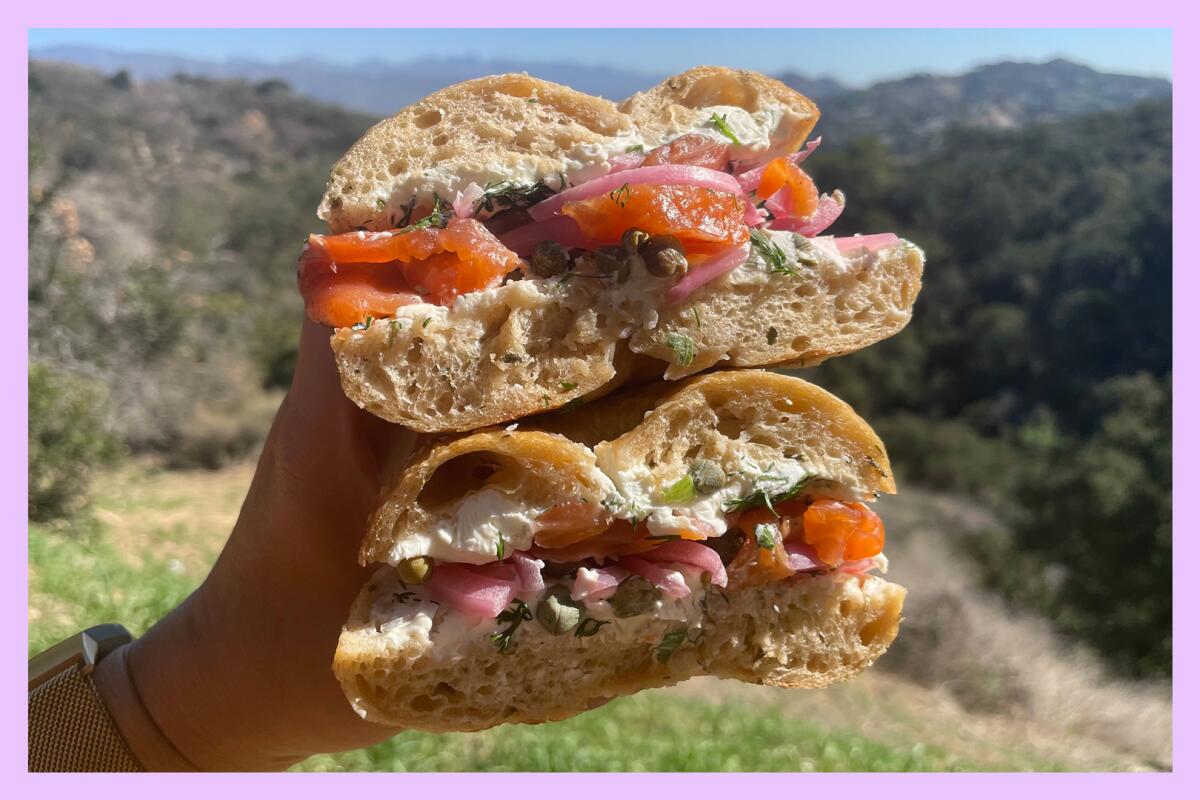
3. Hike and nosh with your fellow bagel and nature lovers. Join the Crescenta Valley and Pasadena chapters of the Sierra Club at 8 a.m. Sunday for their annual summer brunch picnic and hike at Deukmejian Wilderness Park. First, you’ll hike about a mile round trip, with 300 feet in elevation. Then, you’ll feast on bagels, fruit, sweet rolls and drinks with your fellow hungry hikers. Bring a jug of water to water trees if you wish. You’ll want to don hiking footwear and appropriate sun protection, like a hat and sunscreen. To join the hike, email the leaders. You can find contact info at sierraclub.org.
The must-read
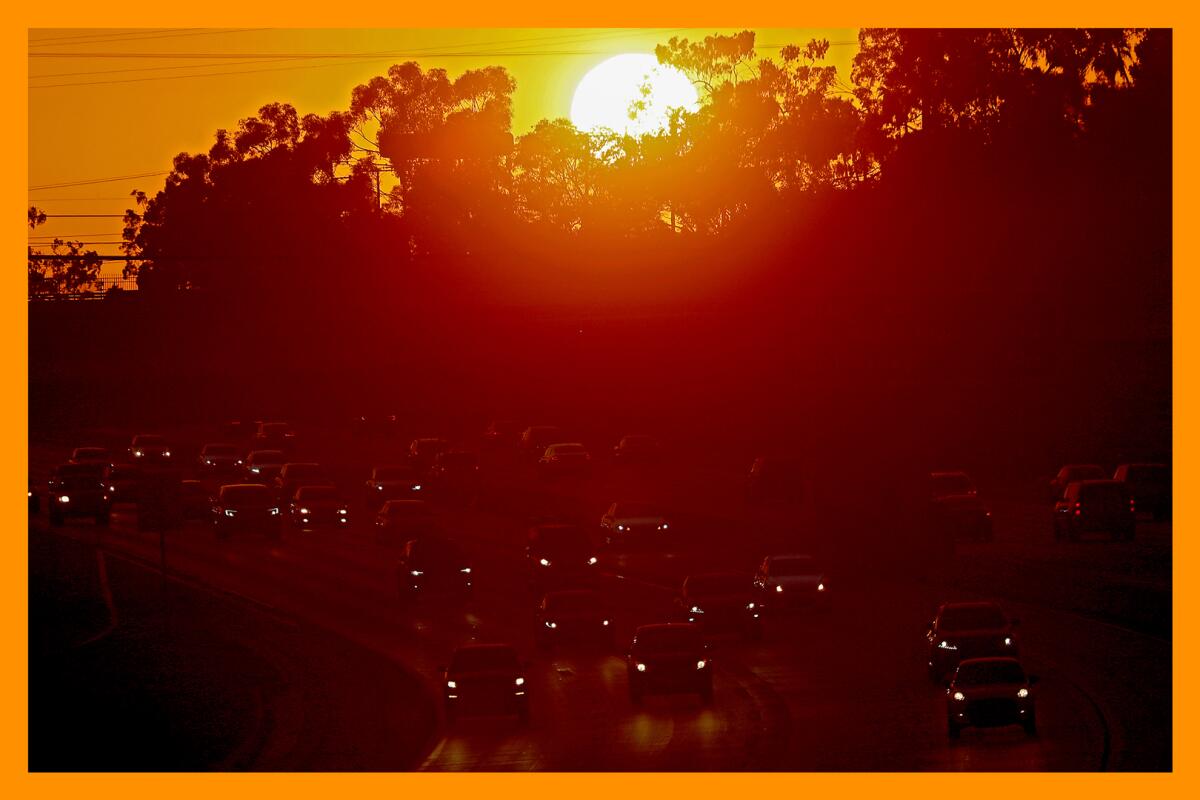
While driving recently, I caught an National Public Radio segment about the link between heat and aggression. Research is still continuing, but the question the piece raised is this: Does the heat make us all angrier and more violent? My personal research — simply driving the 210 and 101 freeways — says yes, but over the last 20 years, scientists have done a much deeper dive than that, tracking political conflict with bouts of extreme heat.
UC Berkeley economics professor Edward Miguel, a researcher on a new study, says: “There’s more likelihood of civil war. There’s more violence. There’s more political instability. And that’s just been shown now around the world in scores and scores of studies.”
Butler’s “Parable of the Sower,” with its visions of drought and rising seas, along with seemingly senseless violence, seems to be prescient. With climate change, a hotter world may mean a more violent world. Though discouraging, simply knowing it may help us be more conscious of our actions when, say, experiencing a bout of road rage on the 405. Read more at npr.org.
Happy adventuring,

P.S.

Seeking ways to stay cool? If you don’t have a public pool nearby or can’t make it to the beach or a local creek or swimming hole (difficult options for folks without cars or with mobility challenges), consider Swimply. It’s a bit like the Airbnb of pools, where you can rent someone’s private pool for an hour or two.
My family recently hosted a party at a pool with a water slide, basketball hoop and trampoline, which provided hours of fun. No one had to drive longer than 15 minutes, and during a stressful summer of activities, that in itself was pure gold. Cool and refreshed, my family returned home and slept like angels.
For more insider tips on Southern California’s beaches, trails and parks, check out past editions of The Wild. And to view this newsletter in your browser, click here.
Sign up for The Wild
We’ll help you find the best places to hike, bike and run, as well as the perfect silent spots for meditation and yoga.
You may occasionally receive promotional content from the Los Angeles Times.




